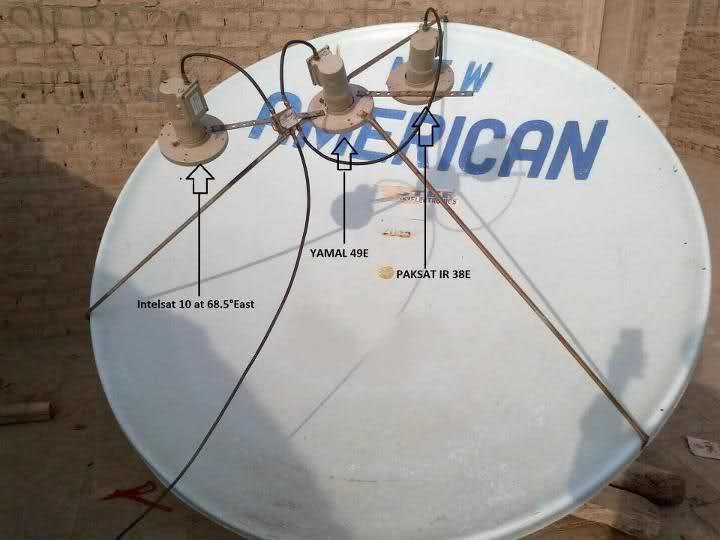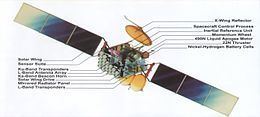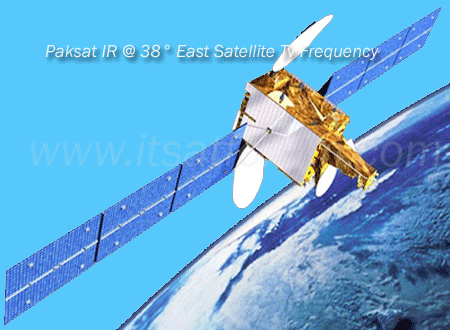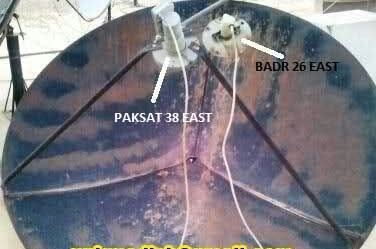Bus HS-601 Reference system Geocentric Period 24 hours Apogee 35.6 million m Rocket Atlas II | Launch site Cape Canaveral LC-36B Regime Geostationary Launch mass 3,000 kg Launch date 31 January 1996 Manufacturer Hughes Aircraft Company | |
 | ||
Mission type Geosynchronous satelliteCommunications Satellite Operator SATELINDO (1996-1998)Insurers (1998-1999)Hughes (1999-2000)Boeing (2000—)Leased to:Kalitel (2000-2002)SUPARCO (2002—) Similar Paksat‑1R, Apstar VI, Apstar‑7, Yamal 202, INSAT‑3A | ||
Pakistan s first communications satellite paksat 1r launching with national anthem of pakistan
Paksat-1, (Other former designation as Palapa C1, HGS-3 and Anatolia 1), is a geosynchronous and communications satellite built and owned by the Boeing Company, leased to the SUPARCO as PakSat. It was successfully put on orbit on 31 January 1996 as "Palapa C1" for Indonesia as its original customer. But, after the technical problems, the satellite was leased to SUPARCO at an orbital location of 38° East Longitude on December 2001. The PakSat-1 offers the C and Ku band coverage in over 75 countries across Europe, Africa, Middle East, South and Central Asia. Its customers included government organizations, TV broadcasters, telecom companies, data and broadband internet service providers.
Contents
- Pakistan s first communications satellite paksat 1r launching with national anthem of pakistan
- Pakistani communications satellite paksat 1r successfully launched
- History
- Services
- Payload characteristics
- Applications
- Paksat footprints
- Future projects
- References

Pakistani communications satellite paksat 1r successfully launched
History

PAKSAT-1 was originally known as Palapa C1. It was launched by Hughes Space and Communications Company for Indonesia. Later Indonesia declared the satellite unusable after an electric power anomaly. The insurance claims were paid and the title was transferred to Hughes Space and Communications Company. HGS-3 was then acquired by Pakistan from M/s Hughes Global Services on "Full Time Leasing " and relocated to Pakistan's reserved slot at 38 degrees east.

Pakistan's Government approved the acquisition on 3 July 2002 and the deal with Hughes Global Services was agreed on 6 August 2002. The satellite started moving to its new slot on 5 December 2002 and it went through a name change from Anatolia-1 to PAKSAT-1 on 18 December 2002.

After a series of orbital maneuvers, the Satellite was stabilized at its final location on December 20, 2002 with 0-degree inclination. The satellite is in position at the Pakistani-licensed orbital location, 38° east longitude.
Services

The services include satellite communications in both C band and Ku band to customers in Pakistan, Africa and the Middle East. Paksat-1’s 30 C-band transponders and 4 Ku band transponders provide total range of satellite communication capabilities.
Payload characteristics

PAKSAT-1’s 30 C-band transponders and 4 Ku band transponders provide the total range of satellite communications capabilities. The satellite is in a geostationary orbit at 38° East Longitude, and carries high power payloads in both bands.
Payload characteristics of PAKSAT-1 are as below:
Applications
Paksat footprints
Paksat-1 has two beams each in both C and Ku bands i.e., C1, C2 and K1, K2, respectively. In C-band, C1 (Southern Beam) covers mainly African Continent and Middle East. The C2 (Northern Beam) covers South Asia, Middle East, African Continent, Central Asian States and Southern Europe. In Ku band, K1 (Southern Beam) covers mainly Middle East and Eastern Africa. K2 (Northern Beam) covers South Asia, Middle East and Central Asian States.
Future projects
Telesat, one of the world’s leading satellite operators, announced on March 13, 2007 that it had signed a consulting contract with the Space and Upper Atmosphere Research Commission (SUPARCO), Pakistan’s national space agency. Under the agreement, Telesat will assist SUPARCO in the procurement and launch of the PAKSAT-1R satellite, which will replace the existing Paksat-1 in 2010.
